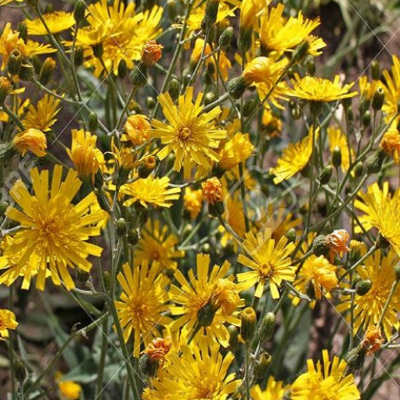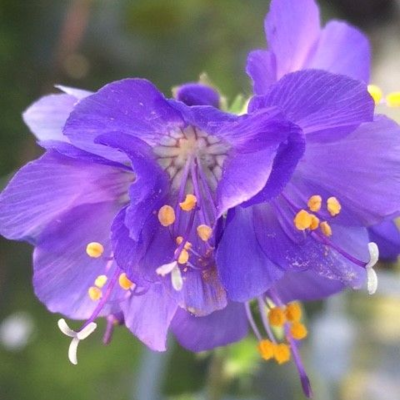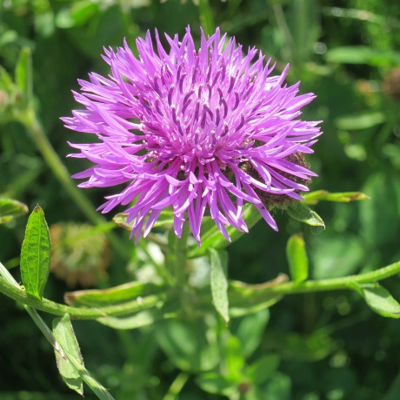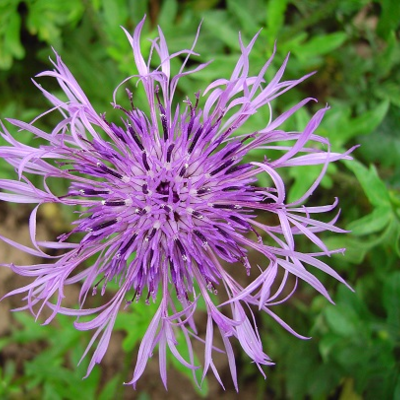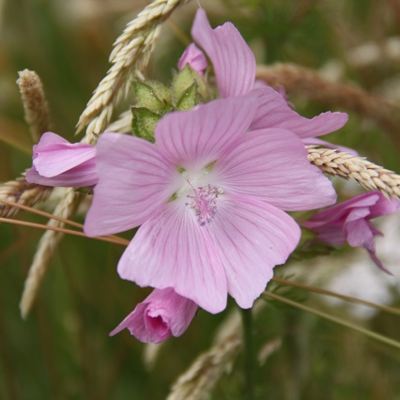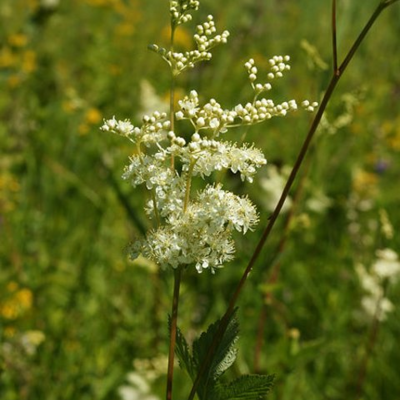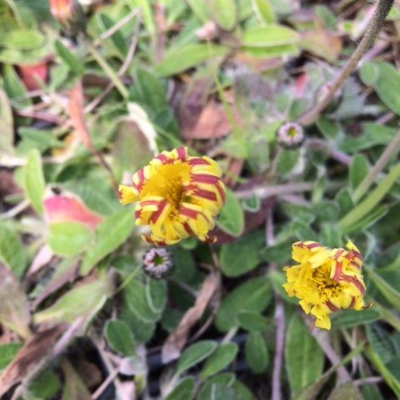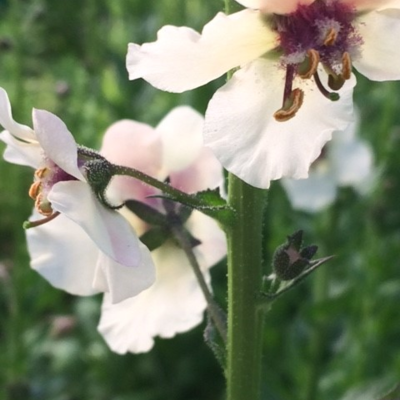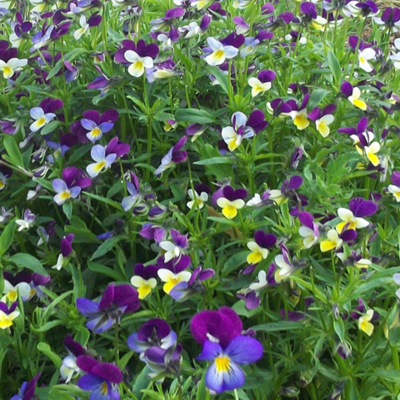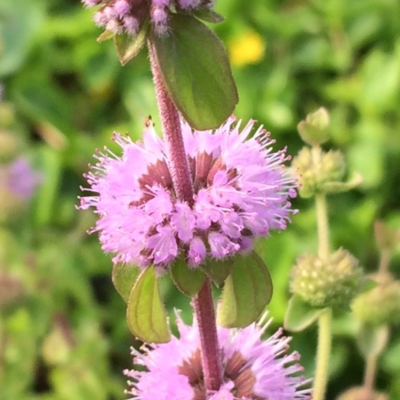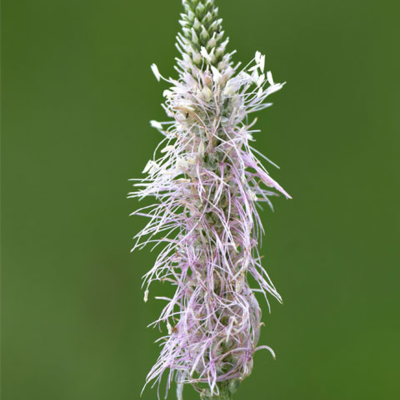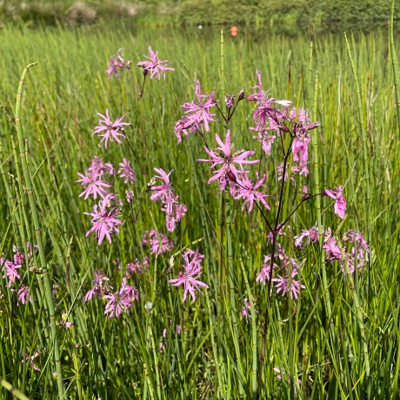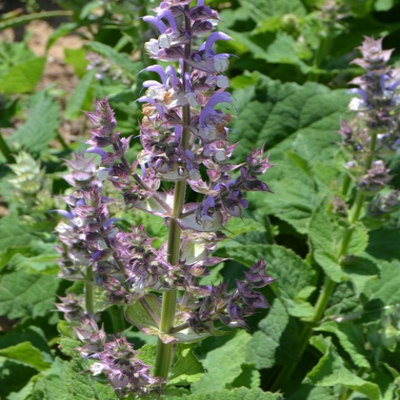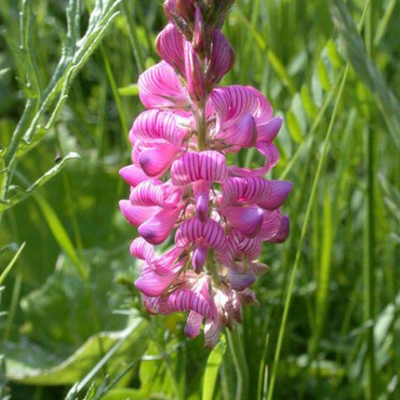Wildflower Plants A to Z
Choose from our entire range of over 100 wildflower plug plants, expertly grown in our very own nursery from high quality, UK native wildflower seed. Our wildflower plugs are ready to be planted straight out into your garden or meadow as soon as they arrive, all year round. Buying individual wildflower plants is one of the best ways to establish your chosen wildflower species, planted individually or as part of a more diverse meadow created from our range of wildflower seeds.
Don't hesitate to get in touch to speak to one of our experts or request a catalogue to view our full range. Ordering regularly or looking for large volumes? Click here to apply for a trade account today - we review all applications within one working day.


Plants for Pollinators highlights plants selected by the RHS as scientifically proven to tackle the declines in bees, butterflies and other pollinators.
Though this warm-paletted wildflower's plumes of canary-yellow petals look like that of dandelion, one can tell the Rough Hawkbit apart by their larger heads with shades of red and orange on the outer florets, as well as a pleasing fragrance which helps to bring bees and butterflies to your garden.
- Type: Perennial
- Height: 15-50cm.
- Flowers: June-October
- Soil Requirement: Well-drained, sandy
- Light Requirement: Full sun
- Natural Habitat: Grasslands, rocky ridges, pathways.
- Also known as: Greater Hawkbit
Likely named for its attractive foliage - forming in dense rosettes of mottles maroon leaves - one shouldn’t overlook its brilliant branching stems of yellow, daisy-like blooms, which helps to bring in the pollinators. An excellent ornamental flower which grows well in rockeries, meadows or mixed pots and baskets.
- Type: Perennial
- Height: 15-45cm.
- Flowers: June-September
- Soil Requirement: Well-drained
- Light Requirement: Full sun
- Natural Habitat: Grasslands, quarries
- Also known as: Leopard
Hyssop is a herb related to the mint, with aromatic leaves which are sometimes used for flavouring and medicine. It looks just as sweet, producing spikes of petals from vivid violet to royal blue and even white. A delightful bit of eye candy that's also attractive to pollinators and easy to grow.
- Type: Perennial
- Height: 40-60cm.
- Flowers: July-September
- Soil requirement: Moist or well-drained
- Light requirement: Full sun or partial shade
- Natural habitat: Grassland, meadows, roadsides
The county flower of Derbyshire. Jacob's Ladder gets its name from its climbing, ladder-like foliage. Produces lavender blue, bell-shaped flowers form in clusters at the top of its tall, slender stems.
- Type: Perennial
- Height: 50-100cm
- Flowers: June - July
- Soil requirement: Moist but well-drained
- Light requirement: Full sun or partial shade
- Natural habitat: North facing areas, limestone hillsides, old meadows
- Also known as: American Great Valerian, Charity, Ladder to Heaven

Plants for Pollinators highlights plants selected by the RHS as scientifically proven to tackle the declines in bees, butterflies and other pollinators.
These thistle-like florets of magenta atop maroon flower heads are an excellent pick for any garden, despite their prickly appearance: Not only are they super hardy, they're vital in wild meadows for supporting weaker wildflowers, and they're also attractive to butterflies and bees!
- Type: Perennial
- Height: 30-60cm.
- Flowers: June-September
- Soil Requirement: Well-drained
- Light Requirement: Full sun or partial shade
- Natural Habitat: Grasslands, forest verges
- Also known as: Bell Weed, Hardhead, Tassel

Plants for Pollinators highlights plants selected by the RHS as scientifically proven to tackle the declines in bees, butterflies and other pollinators.
Greater Knapweed is hardy and tall-growing, and helps to bring in butterflies. We recommend complimenting its sharp and showy, thistle-like flowers with a similarly starburst-shaped scabious, or use softer shapes to and colours contrast with specimens such as the ox-eye daisy or mallow.
- Type: Perennial
- Height: 40-90cm.
- Flowers: June-September
- Soil Requirement: Well-drained
- Light Requirement: Full sun or partial shade
- Natural Habitat: Grasslands, cliff-sides
- Also known as: Black Top
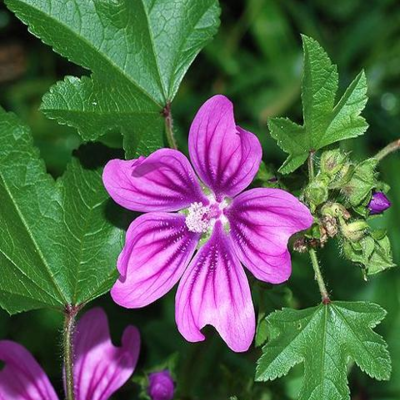

Plants for Pollinators highlights plants selected by the RHS as scientifically proven to tackle the declines in bees, butterflies and other pollinators.
There's many a reason to plant the tough, adaptable and hearty bloom that is mallow: cherish it for its heart-winning, heart-shaped pink petals veined with violet, or for its numerous medicinal and culinary uses; it's a flower that promises to please in many different environments.
- Type: Annual or Biennial
- Height: 30-90cm.
- Flowers: June-September
- Soil Requirement: Moist but well-drained
- Light Requirement: Full sun
- Natural Habitat: Meadows, road verges
- Also known as: Cheese Cakes, Marsh Mallow, Round Dock

Plants for Pollinators highlights plants selected by the RHS as scientifically proven to tackle the declines in bees, butterflies and other pollinators.
The Musk Mallow- so named for its musky, strong scent which only gets stronger in the summer warmth- produces pastel pink, heart-shaped petals; no wonder mythology treats it as a flower of love! Beloved by bees, and its precious blooms are an extra-sweet sight in the garden.
- Type: Perennial
- Height: 30-90cm.
- Flowers: July-September
- Soil Requirement: Well-drained
- Light Requirement: Full sun
- Natural Habitat: Hedgerows, meadows
- Also known as: Abelmosk, Ambrette

Plants for Pollinators highlights plants selected by the RHS as scientifically proven to tackle the declines in bees, butterflies and other pollinators.
These vibrant yellow flowers make for an ideal choice for beds, borders, or even lawns: its bright colour and subtle, sweet scent helps to attract bees and butterflies.
- Type: Annual
- Height: 15-45cm.
- Flowers: June-October
- Best Sown: Spring
- Soil Requirement: Well-drained
- Light Requirement: Full sun
- Natural Habitat: Hedgerows, meadows
- Also known as: Guild Weed, Yellow Daisy, Yellow Ox-Eye


Plants for Pollinators highlights plants selected by the RHS as scientifically proven to tackle the declines in bees, butterflies and other pollinators.
Marigolds are always a lovely choice for the garden- even in loamy soil. The simple-yet-stunning beauty of these clusters of heart-shaped leaves and beaming golden flowers goes without saying- what’s more, they’re hardy, nectar-rich and even considered to be good luck in some parts of the country. Best placed in a sunny spot where they’ll give off a gorgeous glow!
- Type: Perennial
- Height: 25-50cm.
- Flowers: March-August
- Soil Requirement: Moist
- Light Requirement: Full sun
- Natural Habitat: Marshes, coast lines, river banks
- Also known as: Goldings, Kingcup, Publican’s Coat
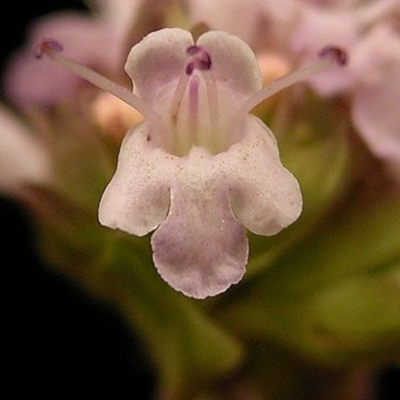

Plants for Pollinators highlights plants selected by the RHS as scientifically proven to tackle the declines in bees, butterflies and other pollinators.
Best known as a common culinary herb, the Wild Marjoram has an extra use in providing some fanciful flavour to your garden! Not only does it provide fragrant foliage, but its small, spiked stems also produce clusters of small, rich Byzantine purple buds, blooming into paler pink petals, providing an interesting mixed palette that can compliment both light and dark flower arrangements!
- Type: Perennial
- Height: 30-60cm.
- Flowers: July-September
- Soil Requirement: Well-drained
- Light Requirement: Full sun
- Natural Habitat: Grasslands, farmland, chalky soil
- Also known as: Oregano, Grove Marjoram, Wintersweet
The frothy formations of this cream-coloured flower are a truly sugary-sweet sight for the eyes- among other senses, as this tall and robust plant is also renowned for its sweet scent, and it’s frequently used as a flavouring, too. For those caring for marshy meadows, Meadowsweet is a perfect treat!
- Type: Perennial
- Height: 60-120cm.
- Flowers: June-September
- Best Sown: Autumn or Spring
- Soil Requirement: Moist
- Light Requirement: Full sun or partial shade
- Natural Habitat: River banks, damp meadows
- Also known as: Bridewort, Honey-Sweet, Meadow Queen
The citrus yellow petals of the Mouse-Ear Hawkweed's florets give it a ragged resembance to its relative, the Common Dandelion, they can be easily told apart by the former's attractive crimson outer petals and leaves covered in wooly white hairs. An interesting combo of colours for decorating any environment.
- Type: Perennial
- Height: 5-30cm.
- Flowers: May to October
- Soil requirement: Well-drained
- Light requirement: Full sun
- Natural habitat: Short pastures, free-draining grassland, sandy dunes, heaths
- Also known as: Blood of St John, Felon Herb, Mouse Ear, Fellon Herb
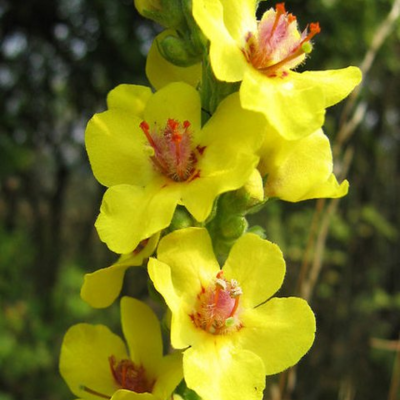

Plants for Pollinators highlights plants selected by the RHS as scientifically proven to tackle the declines in bees, butterflies and other pollinators.
This five-petalled flower's buttery yellow beauty is of a similar, cheery style to that of the daffodil, but its hairy, ruby-red anthems enriches its beauty further, giving it a strong, eye-catching effect. Alongside its fuzzy foliage, this is an ideal plant to place in a herbaceous border, for spikes of striking beauty!
- Type: Perennial
- Height: 15-45cm.
- Flowers: June-September
- Soil Requirement: Well-Drained
- Light Requirement: Full sun
- Natural Habitat: Road verges, hedgerows
- Also known as: Black-Rooted Mullein, Tall Mullein
Growing tall, slender stems with flowers climbing up the stalk, the Moth Mullein’s subtle beauty comes in a variety of colours: petals are often white, tinted with pale pink or lemon yellow. Much like its namesake, it enjoys a place in bright light where its bright blooms can really glow- and it’s not picky about soil conditions, making it ideal for borders or rockeries.
- Type: Biennial
- Height: 60-100cm.
- Flowers: June-September
- Soil Requirement: Well-drained
- Light Requirement: Full sun
- Natural Habitat: Woodland margins, clearings, waste grounds
- Also known as: Shepherd’s Club, Slippery Mullein, Woolly Mullein
A famous subject mentioned in Shakespearian stageplay, this lovely, hardy and hearty flower truly is the perfect colour of a midsummer night’s dream, with heart-shaped white or yellow petals stained purple in the centre, supposedly from being hit by one of Cupid’s arrows. The unique, whiskery patterns on each pansy are easy to fall in love with, and make for a spellbinding spectacle when scattered in borders or rockeries.
- Type: Annual
- Height: 15-30cm.
- Flowers: April-June
- Soil Requirement: Moist but well-drained
- Light Requirement: Full sun
- Natural Habitat: Grasslands, dry meadows, rocky outcrops
- Also known as: Cupid’s Flower, Heartsease, Love-In-Idleness
Unique lilac flowers that emit a very strong fragrance of spearmint when crushed that's commonly used in aromatherapy. This species has been known to be used in herbal medicine as an insect repellent and antiseptic.
- Type: Perennial
- Height: 10-25cm
- Flowers: August onwards
- Soil requirement: Damp
- Light requirement: Full sun or partial shade
- Natural habitat: Grassland, meadows, roadsides
- Also known as: Pennyrile, Squaw Mint, Mosquito Plant, Pudding Grass
This grass-like plant produces dense spikes of greenish florets, which later display long, lilac stamens that provide this otherwise-prickly plantain with a soft and ribbony appearance. A real gift to your garden that’s perfect for pollinators, and also provides a sweet scent like vanilla. Well-suited to meadows.
- Type: Perennial
- Height: 30-45cm.
- Flowers: May-August
- Soil Requirement: Well-drained, chalky
- Light Requirement: Full sun
- Natural Habitat: Grasslands, pastures, roadsides
- Also known as: Fire Leaves, Healing Herb, Kemps
True nature-lovers can give little bit back to nature with this rugged and robust meadow plant. The cream-coloured anthers that give colour to the Ribwort Plantain's spikes of sharp umber petals also serve as a vital food source for pollinators and other animals. A good addition to meadows that's easy to naturalise.
- Type: Perennial
- Height: 60-90cm.
- Flowers: April-September
- Soil Requirement: Well-Drained
- Light Requirement: Full or partial shade
- Natural Habitat: Grasslands, roadsides
- Also known as: Black Jack, Hen Plant, Ribgrass

Plants for Pollinators highlights plants selected by the RHS as scientifically proven to tackle the declines in bees, butterflies and other pollinators.
Scarlet, saucer-shaped, 4-petalled flowers used across the country and beyond as a symbol of remembrance for soldiers lost in the Great War. A hardy annual that self-seeds readily, its vibrant colours are a valuable addition for wild meadows, beds, borders and cottage gardens.
- Type: Annual
- Height: 30-60cm.
- Flowers: May-July
- Soil Requirement: Well-drained
- Light Requirement: Full sun
- Natural Habitat: Grasslands, farmland, roadsides
- Also known as: Blind-Eyes, Flanders Poppy, Headache Plant

Plants for Pollinators highlights plants selected by the RHS as scientifically proven to tackle the declines in bees, butterflies and other pollinators.
So-named for its feathery, forked flowers in flamingo pink, we recommend these raggedy riches for a lot of reasons. Planted in a marshy spot, these bright bursts of streaming pink petals will help to bring in bees and butterflies!
- Type: Perennial
- Height: 30-60cm.
- Flowers: May-July
- Soil Requirement: Moist
- Light Requirement: Full sun or partial shade
- Natural Habitat: Woodland, wetlands
- Also known as: Cuckoo Hood, Meadow Pink, Wild William
The lilac-pink bracts of the Clary Sage certainly are a sight for sore eyes! Not only that, but its heart-shaped foliage is famously aromatic to the point where it’s frequently used in aromatherapy, along other medicinal uses the herb’s seen throughout the years.
- Type: Biennial
- Height: 60-100cm.
- Flowers: March-September
- Soil Requirement: Well-drained
- Light Requirement: Full sun
- Natural Habitat: Grassland, coastal areas
- Also known as: Clear-Eye, See-Bright
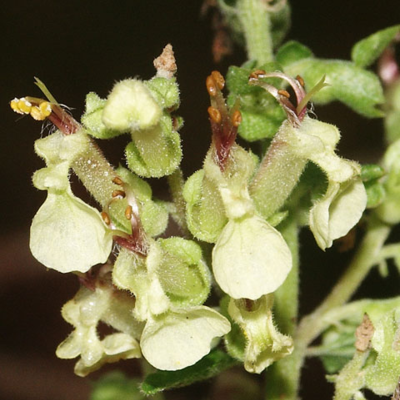

Plants for Pollinators highlights plants selected by the RHS as scientifically proven to tackle the declines in bees, butterflies and other pollinators.
Though the Wood Sage’s crinkly foliage has a more subtle scent than some of its cousins, this sublime specimen has n unusual beauty, bearing dark burgundy stems and stamens contrasted by cream-coloured petals with a large lower lip, making it look like a spoonful of sugar- and it’s sure to add that little extra bit of sweetness to stone gardens and hedgerows.
- Type: Perennial
- Height: 30–50cm.
- Flowers: July-September
- Soil Requirement: Well-drained
- Light Requirement: Partial shade
- Natural Habitat: Woodland, heathland, coasts
- Also known as: Garlic Sage, Hind Heal
These upright spikes of nectar-rich, stripey fuchsia flowers are your best bet for a bloom that’s beneficial to the wildlife of your wild meadow- it’s best grown with grasses to balance out both plants and best show off its vivid colouration!
- Type: Perennial
- Height: 40–50cm.
- Flowers: July-September
- Soil Requirement: Well-drained, chalky
- Light Requirement: Full Sun
- Natural Habitat: Meadows, Foot Paths
- Also known as: Esparsette, French Grass, Holy Clover
Choosing different wildflower plants by species gives you complete control over when you plant them, where you plant them and what the end result will be. And buying wildflower plug plants instead of seeds, means that you don't have to wait for them to germinate - perfect if speed is of the essence!
The full range of over 100 British wildflower plants species from Boston Seeds is available to buy online in trays of 25, 150 and 500 plug plants and all are available with nationwide delivery.
Want to learn more about the likes and dislikes of your favourite wildflower plants? Our handy wildflower species quide will tell you all you need to know - yours to download and keep for FREE.
Buy With Confidence



